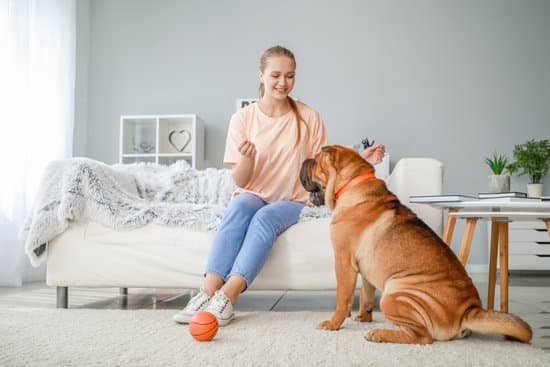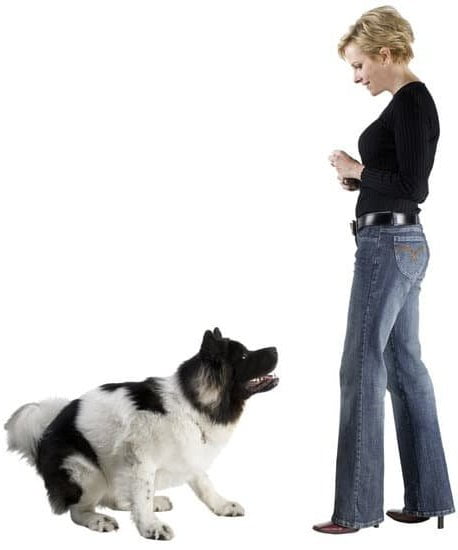Are you tired of coming home to find your furniture chewed up by your beloved pet? In this article, we will explore how to train a dog to stop chewing furniture. We will discuss the root causes of this behavior and provide practical tips for creating a dog-proof environment in your home. By understanding why dogs chew furniture and implementing positive reinforcement techniques, you can effectively correct this unwanted behavior and maintain a well-behaved canine companion.
Many dog owners are puzzled by their pet’s penchant for chewing on furniture. Understanding the reasons behind this behavior is crucial in addressing it effectively. Dogs may chew on furniture due to boredom, anxiety, teething, or simply out of curiosity. Identifying the root cause of your dog’s chewing behavior is the first step in training them to stop.
Creating a dog-proof environment involves removing any tempting objects from your dog’s reach and providing appropriate chew toys and alternatives. Positive reinforcement training techniques can also be used to redirect their focus and reward good behavior. Consistency and patience are key in correcting chewing behavior, as relapses can occur if you’re not diligent in your efforts. If all else fails, seeking professional help can provide additional support for persistent chewing issues.
Identifying the Root Cause of Your Dog’s Chewing Behavior
Understanding why dogs chew furniture is essential in addressing this behavior. Some common reasons for chewing include teething, boredom, anxiety, or lack of physical and mental stimulation. It’s important to observe your dog’s behavior and environment to identify the root cause of their chewing behavior.
To pinpoint the reason behind your dog’s chewing habits, consider the following factors:
- Age: Puppies may chew due to teething, while older dogs may do so out of boredom or anxiety.
- Energy level: High-energy breeds may need more physical and mental stimulation to prevent destructive chewing.
- Environment: Changes in surroundings, such as moving to a new home or being left alone for long periods, can trigger anxiety-induced chewing.
- Stress and anxiety: Dogs may resort to chewing as a way to relieve stress or anxiety.
Once you have determined the root cause of your dog’s chewing behavior, you can work on addressing it effectively. By understanding why your dog chews furniture, you can implement targeted strategies to train them to stop this unwanted behavior. Identifying the root cause is a crucial step in creating a well-rounded approach to managing your dog’s chewing habits.
Creating a Dog-Proof Environment for Your Home
Aside from providing appropriate chew toys and using positive reinforcement training techniques, creating a dog-proof environment is crucial in preventing your furry friend from chewing on your valuable furniture. Start by keeping your home organized and removing any items that you don’t want your dog to chew on. This includes shoes, books, remotes, and anything else that would be enticing to a curious pup.
Another important step in creating a dog-proof environment is to use baby gates or exercise pens to restrict your dog’s access to certain areas of the home where they tend to act out their chewing behavior. By doing this, you can effectively limit the areas where potential damage may occur. Furthermore, using deterrent sprays on furniture legs or other tempting objects can also discourage dogs from gnawing on them.
It’s also worth considering crate training as an option for when you’re not available to supervise your dog. Not only does it help prevent unwanted chewing, but it also keeps your pet safe from ingesting harmful objects while you’re away. Ultimately, being proactive in setting up barriers and removing temptations around the house will go a long way in preventing destructive chewing behavior from occurring.
| Training Method | Description |
|---|---|
| Using baby gates/exercise pens | Limits access to certain areas of the home |
| Deterrent sprays | Discourages dogs from gnawing on furniture and other tempting objects |
| Crate training | Offers a safe space for dogs when unsupervised |
Providing Appropriate Chew Toys and Alternatives
Dogs chew furniture for a variety of reasons, including boredom, teething, anxiety, and the need for mental and physical stimulation. One effective way to redirect their chewing behavior is by providing appropriate chew toys and alternatives. When choosing chew toys for your dog, it’s important to consider the type of toy, size, and durability.
There are different types of chew toys available in the market, such as rubber toys, nylon bones, rope toys, and puzzle toys. Rubber toys are great for dogs who like to gnaw or chew continuously. Nylon bones are durable and long-lasting options for aggressive chewers. Rope toys can help floss your dog’s teeth and provide entertainment through interactive play. Puzzle toys can stimulate your dog’s mind while providing a rewarding chewing experience.
It’s essential to select an appropriately sized chew toy for your dog to ensure safety and prevent choking hazards. Additionally, always supervise your dog while they are playing with a new toy to observe how they interact with it and ensure they use it appropriately.
It is crucial to rotate your dog’s chew toys regularly to keep them engaged and prevent boredom. Providing a variety of textures and shapes will also keep them interested in their toys. Introducing new chew toys and rotating them can help prevent destructive chewing behavior on furniture by offering a positive outlet for their chewing needs.
| Chew Toy Type | Description |
|---|---|
| Rubber Toys | Great for continuous gnawing or chewing. |
| Nylon Bones | Durable and long-lasting options for aggressive chewers. |
| Rope Toys | Provide flossing action for teeth and interactive play. |
Using Positive Reinforcement Training Techniques
When it comes to training your dog to stop chewing on furniture, positive reinforcement techniques can be highly effective. This type of training focuses on rewarding good behavior rather than punishing bad behavior. Here are some ways you can use positive reinforcement to deter your dog from chewing on your furniture:
- Use treats: Whenever you catch your dog chewing on an appropriate toy instead of the furniture, praise them and give them a small treat. This will help reinforce the idea that chewing on their toys is a good thing.
- Clicker training: Clicker training is a form of positive reinforcement that involves using a clicker to mark the exact moment your dog does something right. For example, if you see your dog chewing on their toy instead of the furniture, click the clicker and then give them a treat.
- Verbal praise: In addition to treats and clicker training, verbal praise can also be an effective form of positive reinforcement. When you see your dog choosing to chew on their toys instead of the furniture, give them lots of verbal praise and affection.
By consistently using these positive reinforcement techniques, you can help teach your dog what behaviors are desirable and which ones are not. It’s important to remember that patience and consistency are key when using these methods, as it may take some time for your dog to fully understand what is expected of them.
Additionally, it’s essential to avoid any form of punishment when trying to correct your dog’s chewing behavior. Punishment can have negative effects on your relationship with your pet and may even lead to increased anxiety and destructive behavior. Instead, focus on rewarding the positive behaviors you want to see in your dog.
Remember that every dog is different, so what works for one dog may not work for another. If you’re struggling with getting your dog to stop chewing on furniture despite using positive reinforcement techniques, don’t hesitate to seek professional help from a certified animal behaviorist or trainer who specializes in managing destructive behaviors in dogs.
Consistency and Patience in Correcting Chewing Behavior
Establish a Routine
Consistency is key when correcting your dog’s chewing behavior. Establish a routine for your dog and make sure to stick to it. This includes feeding, walking, and playtime. Having a consistent schedule can help regulate your dog’s behavior and reduce their anxiety, which may be a cause of their chewing habit.
Redirect Their Focus
When you catch your dog chewing on furniture, calmly redirect their focus to an appropriate chew toy or bone. It’s important not to scold or punish them harshly, as this can lead to fear and anxiety in your pet. Instead, offer them an alternative while gently reprimanding them with a firm “no” to communicate that the behavior is undesirable.
Stay Patient
Changing a dog’s behavior takes time and patience. It’s important to stay patient and consistent with training methods. Keep in mind that dogs learn at their own pace, so try not to get frustrated if progress seems slow. Positive reinforcement and consistency will eventually lead to success in correcting your dog’s chewing behavior.
Seeking Professional Help for Persistent Chewing Issues
When to Seek Professional Help
If you have tried various methods to train your dog to stop chewing furniture and the problem still persists, it may be time to seek professional help. Persistent chewing behavior can be a sign of underlying health issues, anxiety, or other behavioral problems that require the expertise of a professional dog trainer or veterinarian.
It is important to recognize when your efforts are not enough and when it is necessary to get help from someone with more experience and knowledge in dealing with such issues.
Consulting a Professional Dog Trainer
A professional dog trainer can assess your dog’s behavior, identify the root cause of its chewing habit, and develop a customized training plan to address the issue effectively. They can provide guidance on using positive reinforcement techniques, as well as offer insight into creating a dog-friendly environment and providing appropriate chew toys. Additionally, they can teach you how to communicate effectively with your dog and establish consistent training routines that can help curb their destructive behavior.
Working With a Veterinarian
In some cases, persistent chewing can be related to underlying health issues such as dental problems, nutritional deficiencies, or anxiety disorders. Consulting with a veterinarian is crucial in ruling out any medical reasons for your dog’s chewing behavior.
A thorough physical examination and diagnostic tests can help determine if there are any underlying health concerns that need to be addressed. If no medical issues are found, the veterinarian may refer you to a certified animal behaviorist who can further assess your dog’s behavioral problems and create an effective treatment plan.
Seeking professional help for persistent chewing issues shows that you are committed to addressing your pet’s behavioral problems in a responsible manner. By consulting with experts in dog training and veterinary care, you can gain valuable insights into managing your dog’s chewing habits and ultimately maintain a well-behaved pet at home.
Preventing Relapses and Maintaining a Well-Behaved Dog
In conclusion, preventing relapses and maintaining a well-behaved dog is crucial after successfully training your dog to stop chewing furniture. It’s important to continue monitoring your dog’s behavior and environment to prevent any relapses in their chewing behavior. Consistency and patience are key when it comes to maintaining the training you’ve implemented. By continuing to provide appropriate chew toys and alternatives, along with positive reinforcement, you can help ensure that your dog remains well-behaved.
It’s also essential to continue creating a dog-proof environment for your home, especially when you’re not around to supervise your dog. This means keeping valuable or tempting items out of reach and using deterrents if necessary. Additionally, seeking professional help for persistent chewing issues can provide valuable insight and guidance in maintaining a well-behaved dog.
By staying proactive and attentive to your dog’s needs, you can greatly reduce the risk of relapses in their chewing behavior. Remember that each dog is unique, so it may take some trial and error to determine the most effective strategies for preventing relapses and maintaining a well-behaved pet. Overall, with time, effort, and consistency, you can help your dog overcome their chewing habits and enjoy a harmonious relationship with them in your home.
Frequently Asked Questions
How Do I Stop My Dog From Destroying My Furniture?
To stop your dog from destroying your furniture, start by providing appropriate chew toys and bones to redirect their chewing behavior. Also, consider using deterrent sprays or covers on furniture legs to discourage chewing.
Consistent and positive reinforcement when they chew on the right items is also important. Lastly, make sure your dog gets enough physical and mental exercise to reduce their urge to chew out of boredom or excess energy.
At What Age Do Dogs Stop Chewing on Furniture?
Dogs typically stop chewing on furniture as they mature and with proper training. Most dogs will start to outgrow their destructive chewing behavior by the age of one or two years old.
However, some individual dogs may continue the behavior if not properly trained. It’s important for owners to consistently guide and redirect their dog’s chewing habits during puppyhood in order to prevent it from becoming a persistent problem.
What Does It Mean When Dogs Chew on Furniture?
When dogs chew on furniture, it can signal various things such as teething in puppies, boredom, lack of exercise, separation anxiety, or even a need for attention. Chewing can also be a way for dogs to relieve stress or anxiety.
Understanding the underlying cause of the behavior is helpful in addressing it effectively. By identifying and addressing the root cause, pet owners can work toward preventing their dogs from engaging in destructive chewing of furniture.

Welcome to the blog! I am a professional dog trainer and have been working with dogs for many years. In this blog, I will be discussing various topics related to dog training, including tips, tricks, and advice. I hope you find this information helpful and informative. Thanks for reading!





